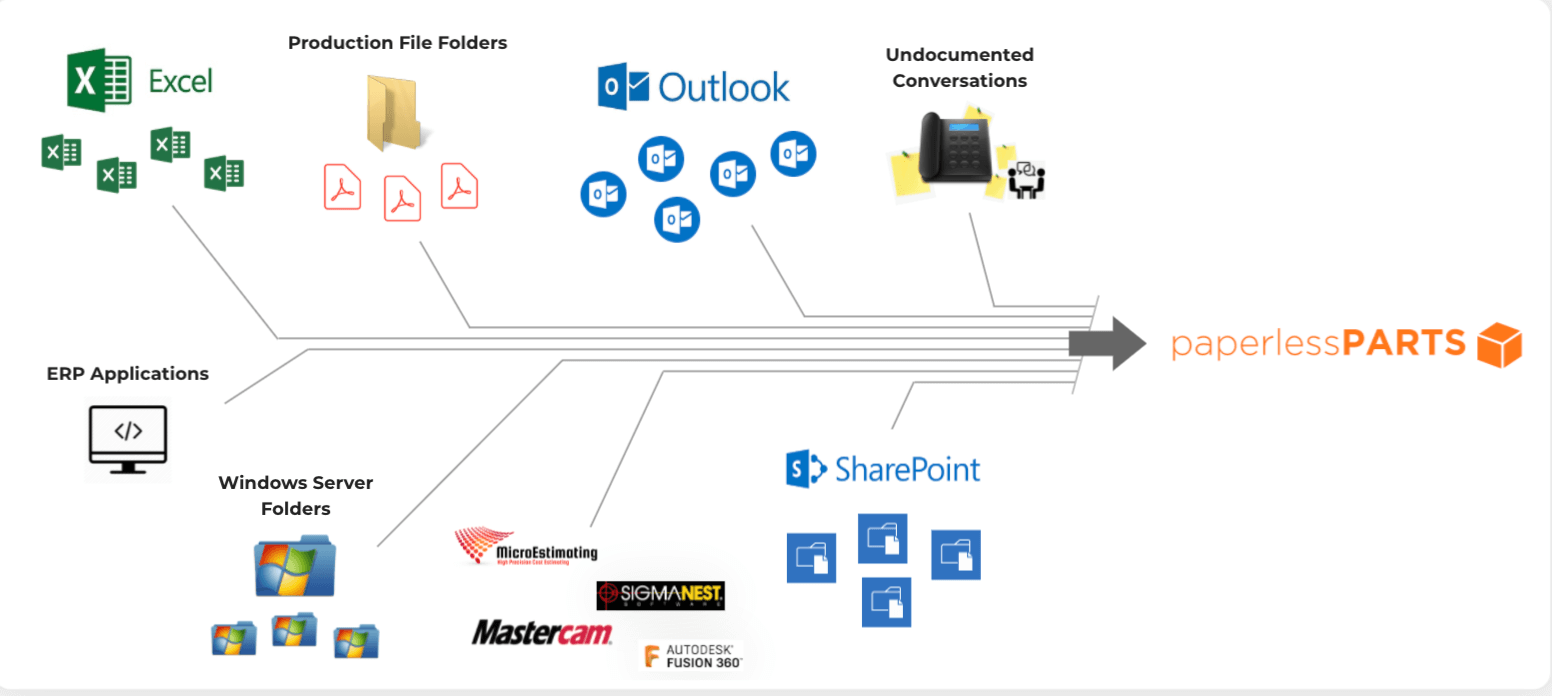
Not All Integrations Are The Same: Find Software That Connects Your Front Office to the Shop Floor
In a previous blog post, we talked about the importance of investing in the right software integrations for your front office. When investing in software to digitize your front office, you want to make sure that you are creating a digital thread that connects your front office to your shop floor. This means having one central platform that is able to connect all of your disparate systems and silos of data together.
Why? Every shop generates terabytes of data a year. How many times do you save data in different folders on your share drive? When an RFQ comes in, do you end up with data for that job living in multiple places such as email, Excel, your ERP, and printed paper on your desk? Every time data is saved somewhere new, a discreet silo of information is created, and manufacturers lose efficiency every time they need to reference a different silo to learn what is going on with a specific job. There is a huge amount of tribal knowledge and data loss from the quote to order process and the order to cash process.
Don’t waste time quoting the same part twice, risk making the wrong part, or miss an engineering rev change because you lack the right data in the right places. Choose a software partner that can help you break down the silos of information and create a single source of truth for all of your data to create consistency, efficiency, secure collaboration, and alignment across people and functions. This means investing in software that is flexible and can integrate all of your systems together into one centralized platform. Here are the 3 things to look for when assessing software for flexibility:
1. Make sure the software you choose has APIs and can integrate with anything
An API allows data to flow between systems. Look for software with mature, open, and well-documented APIs, which make the software more manageable to use and interface with. The benefits of mature, open, well-documented APIs are that more third-party tools can integrate with the software and the cost of developing a custom integration with a consultant or in-house developer will be much lower. Find software that allows this level of integration to enable one central platform where all of your data can live.
2. Look for software that can seamlessly integrate with your core systems and extend their functionality
You likely have core systems in place like your ERP and CRM systems. It is common to feel like you have exhausted all of the capabilities of these core systems, and they just aren’t giving you the capabilities you need. It can be really complicated and cumbersome to try to rip and replace these core systems. Instead, you want to look for software that can seamlessly integrate with your existing systems, like your ERP, and supercharge the capabilities of those systems.
3. Find software that doesn’t force you into running your business a certain way
ERPs are characteristically applied as “one solution fits all”. Since ERPs are built to fit into any business, by default, they are not customized for manufacturing business processes and your company has to fit into the ERPs set of functionality. This can lead to issues years after the initial implementation.
Similarly, CRMs like Hubspot, Salesforce, or Zoho are not customized for manufacturers and are not designed to track pipeline and revenue the way manufacturers do, where the pipeline is a quote. Look for software that is customizable and designed for your business processes.
Learn about Paperless Parts

